
Key Points
- New Lows on the NYSE Take a Welcome Turn Lower
- NYSE New Highs Need to Start Moving Higher
- S&P 500 Metrics Improve for a Second Consecutive Week
- Small Cap Breadth Weakens
- NASDAQ 100 Data Shows the Most Improvement
NYSE Breadth
The NYSE Advance/Decline line has staged a rebound to attack the declining 50-day moving average. The improvement is notable but so far has not gone far enough to change the fact that this indicator remains in a downtrend. At the same time, the S&P 500 has retaken its 50-day moving average after a strong rebound from the 4,200 level.
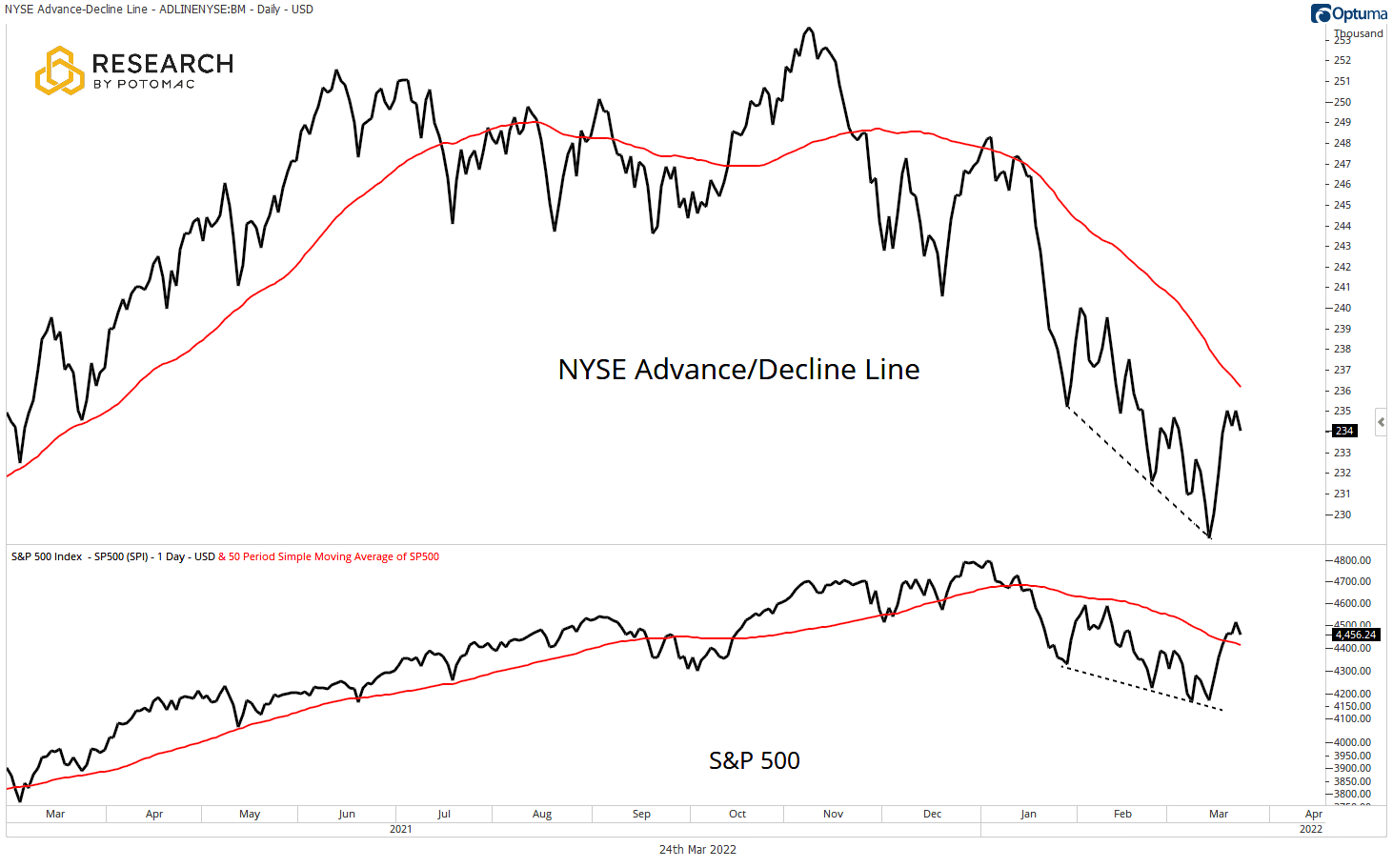
In a welcome sign, the five-day moving averages of issues on the NYSE making new 52-week and six-month lows have taken a turn to the downside. The six-month metric has actually made a series of lower highs and lower lows since the January peak. Equity bulls want to see these metrics remain pinned as close to the floor as possible as the S&P 500 holds above the key support levels that we have been highlighting in our work.
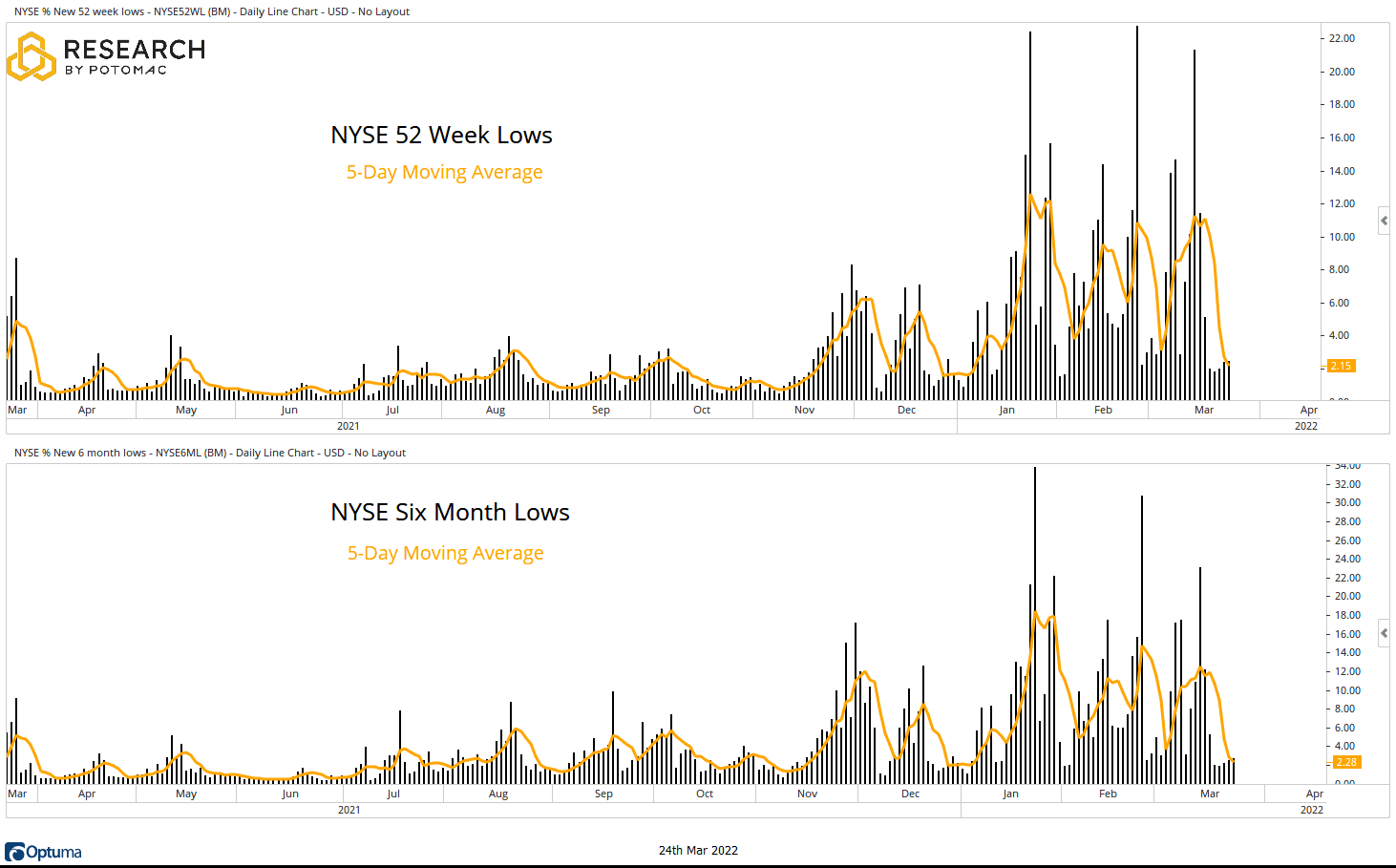
While it is encouraging to see new lows make a move to the downside, bulls also want to see the five-day moving averages of stocks on the NYSE making new six-month, and 52-week highs begin to improve in a sustained way. That goal has been elusive this year. Yes, these metrics have turned higher this week, but they have yet to make a higher high.
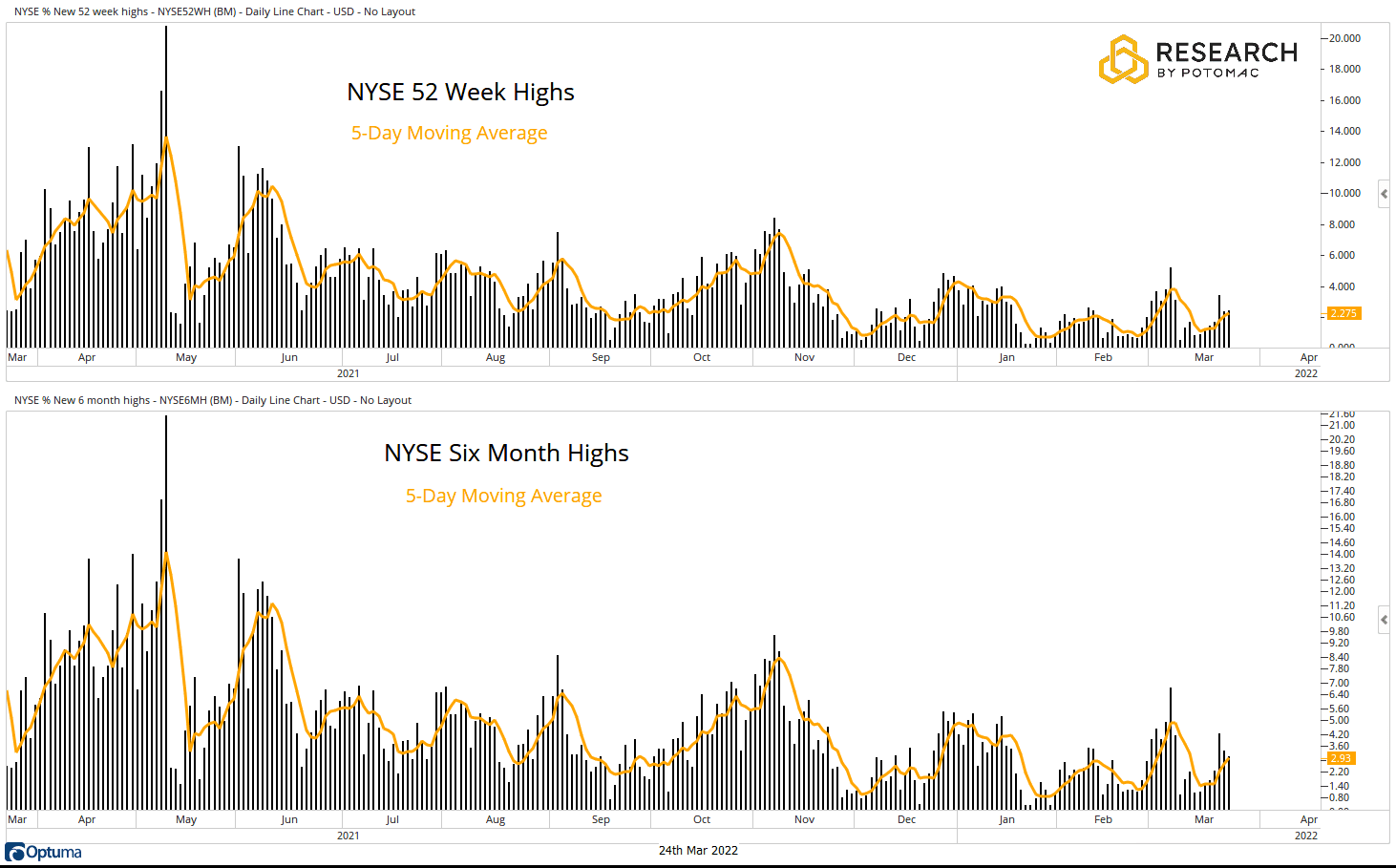
As the S&P 500 does battle with the 200-day moving average, the percentage of NYSE issues trading above their respective measures of long-term trend have increased on the week, moving from 26% to 28%. While this improvement is encouraging, we have seen this before, and the current level is still suppressed. Bulls want to see a steady improvement that breaks the downtrend and begins to work back toward the 50% level.
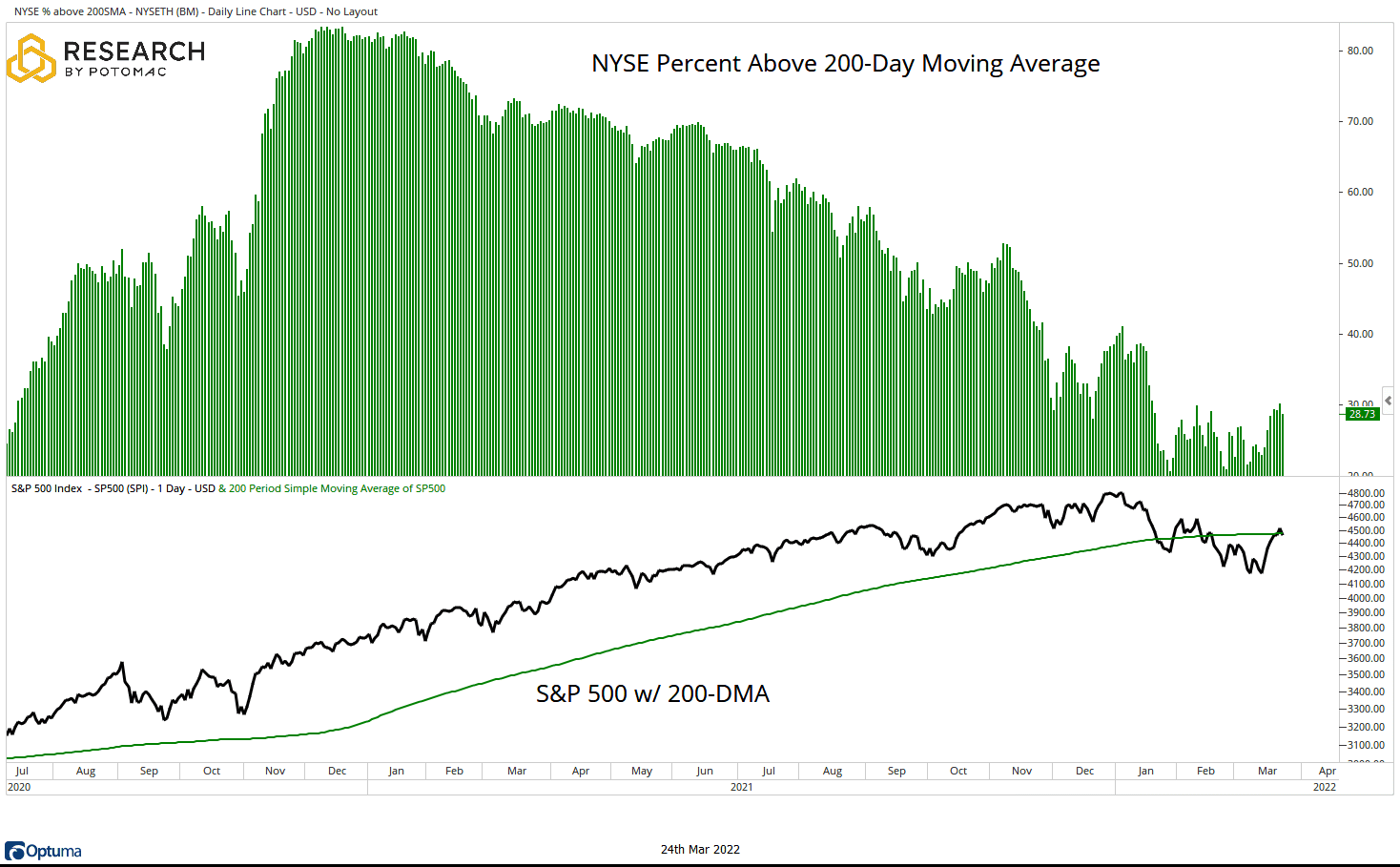
The percentage of NYSE issues trading above their respective 50-day moving averages rose to 40% from 31% last week, spiking to the upside and logging a second consecutive week of improvement. Ideally, the bulls want to see this metric above the 60% mark to indicate that a healthy majority of issues are in an intermediate-term uptrend.
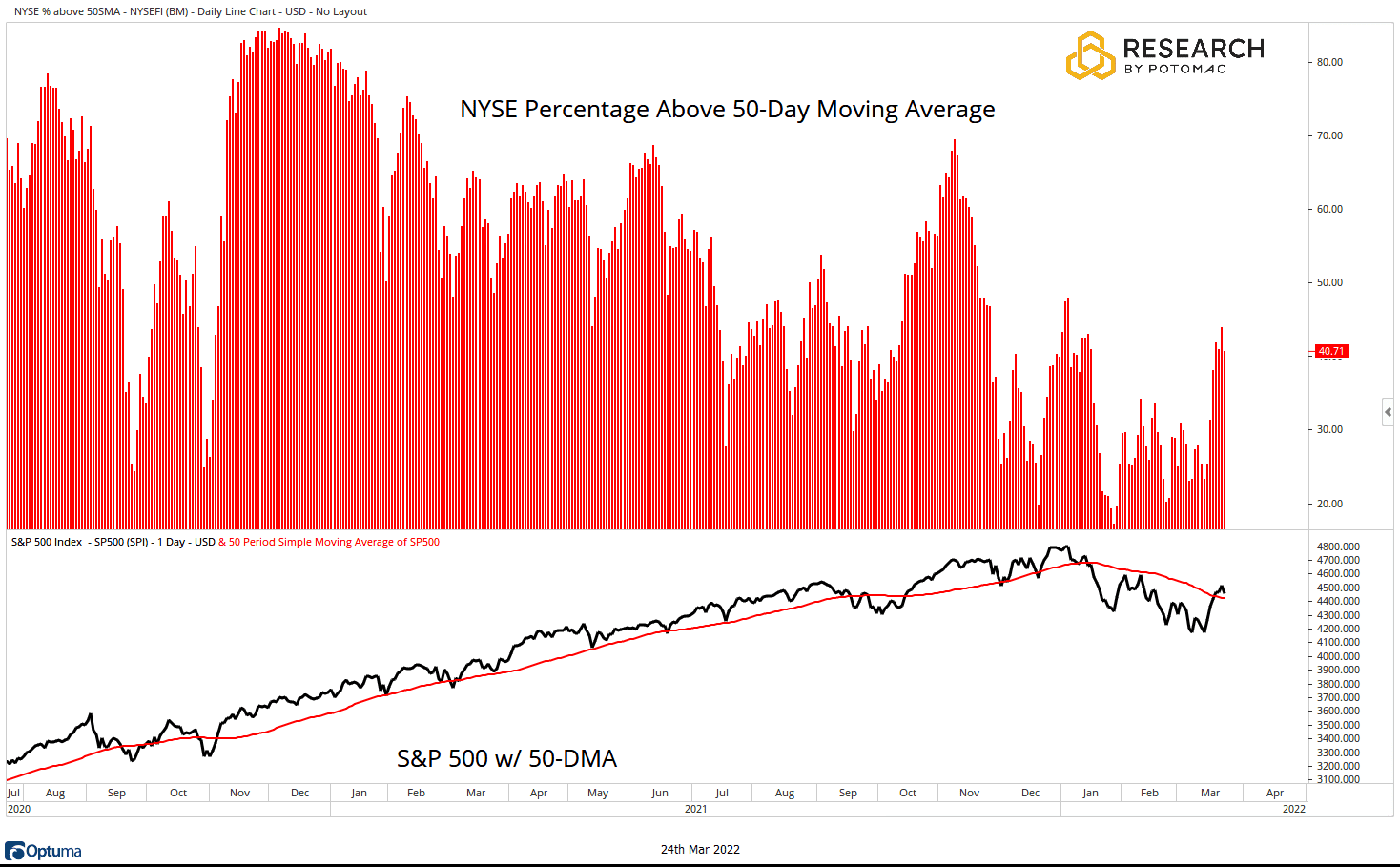
The percentage of NYSE issues trading above their respective 20-day moving averages rose on the week, moving from 45% to 57%. The improvement in this short-term metric for a second consecutive week is a step in the direction of healing the bout of bad breadth that has plagued the market for some time. The S&P 500 is also holding above its 20-day moving average, and that moving average is beginning to turn higher.
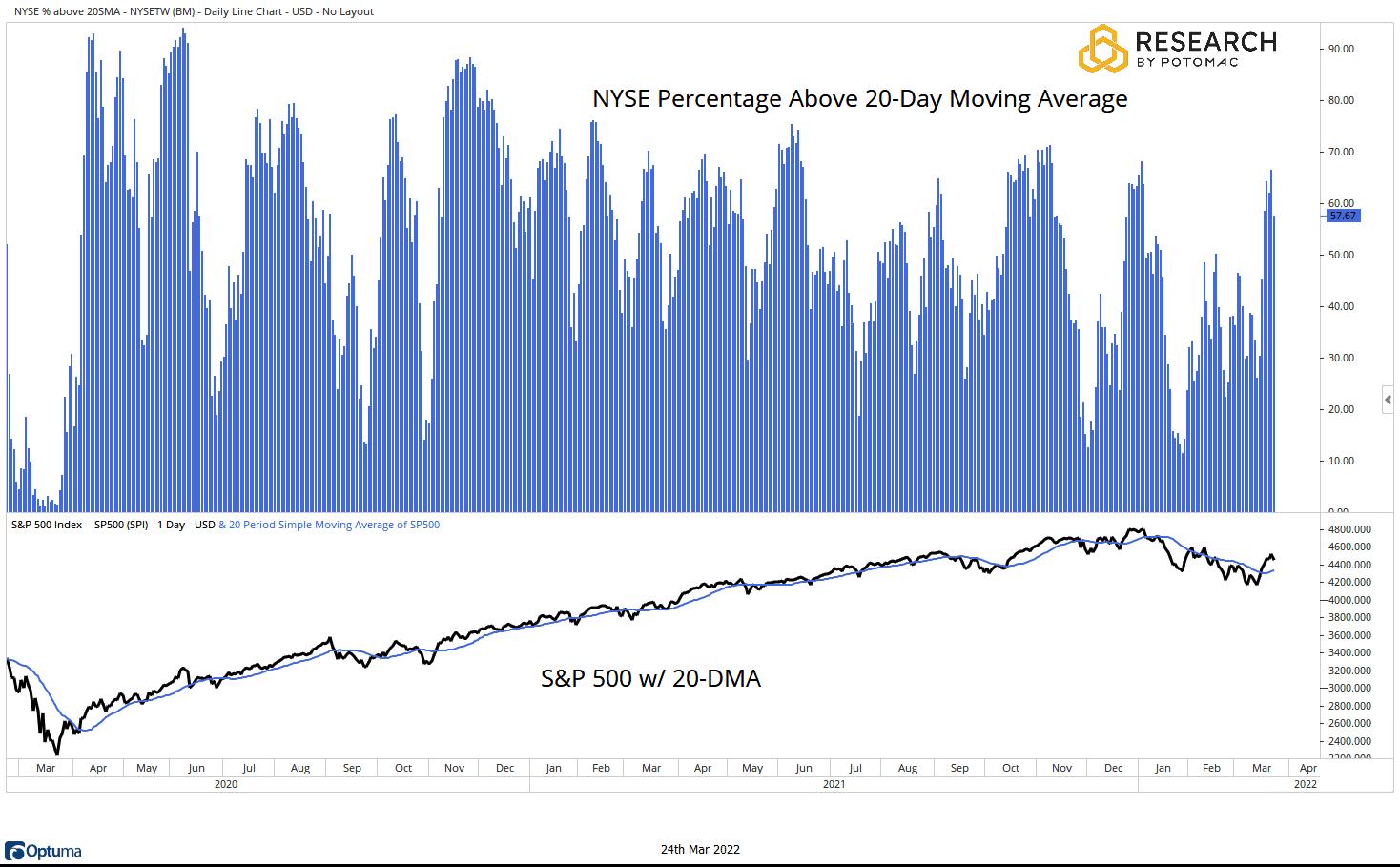
S&P 500 Breadth
Breadth metrics for the S&P 500 have improved for a second consecutive week.
- Advance/Decline Line: Wrestling with the declining 50-day moving average.
- Percent Above Their 200-Day Moving Average: 45% from 42% last week.
- Percent Above Their 50-Day Moving Average: 47% from 40% last week.
- Percent Above Their 20-Day Moving Average: 71% from 66% last week.
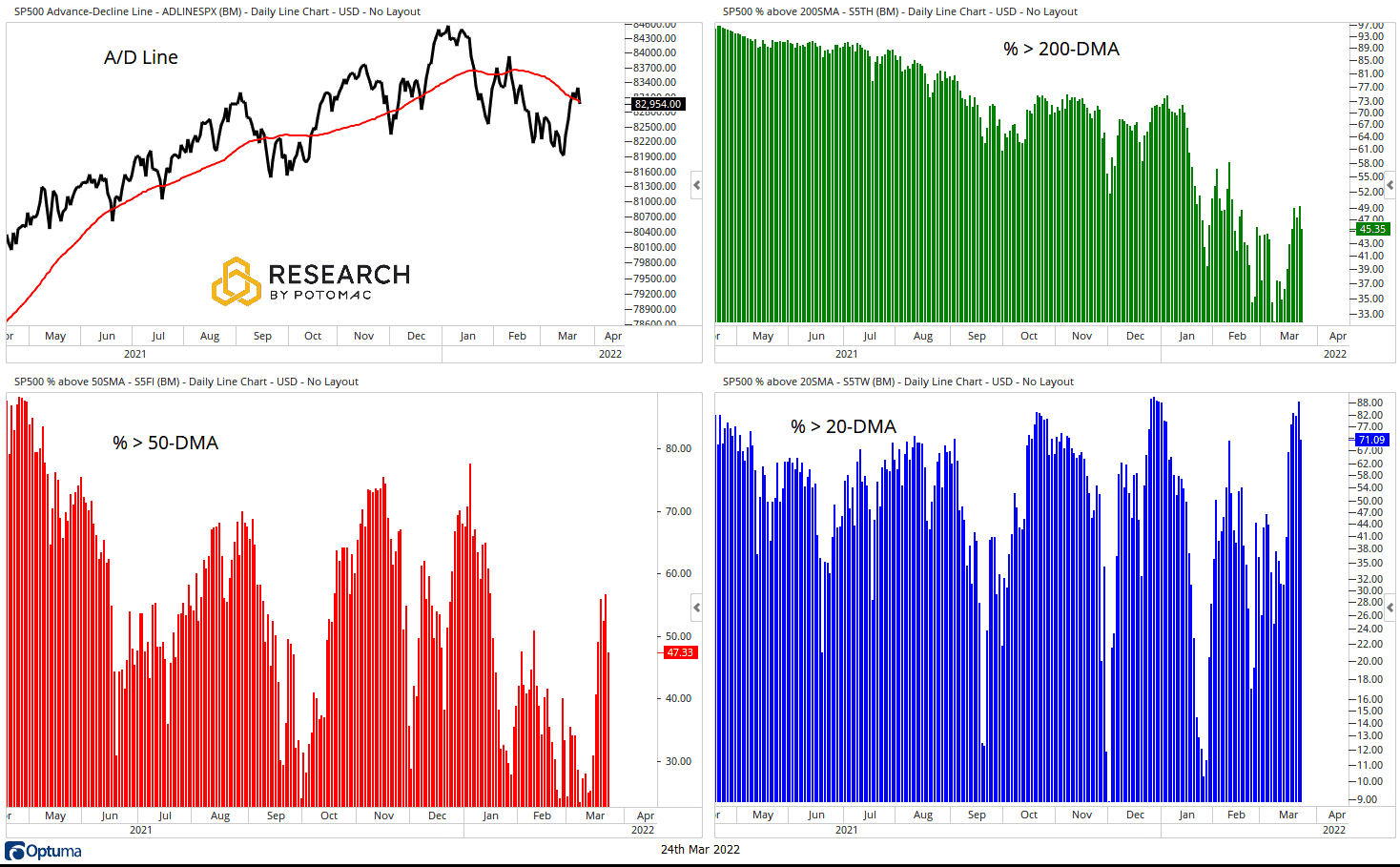
Small Cap Breadth
Breadth metrics for the S&P 600 Small Cap Index fell on the week.
- Advance/Decline Line: Below the 50-day moving average.
- Percent Above Their 200-Day Moving Average: 38% from 41% last week.
- Percent Above Their 50-Day Moving Average: 44% from 46% last week.
- Percent Above Their 20-Day Moving Average: 49% from 63% last week.
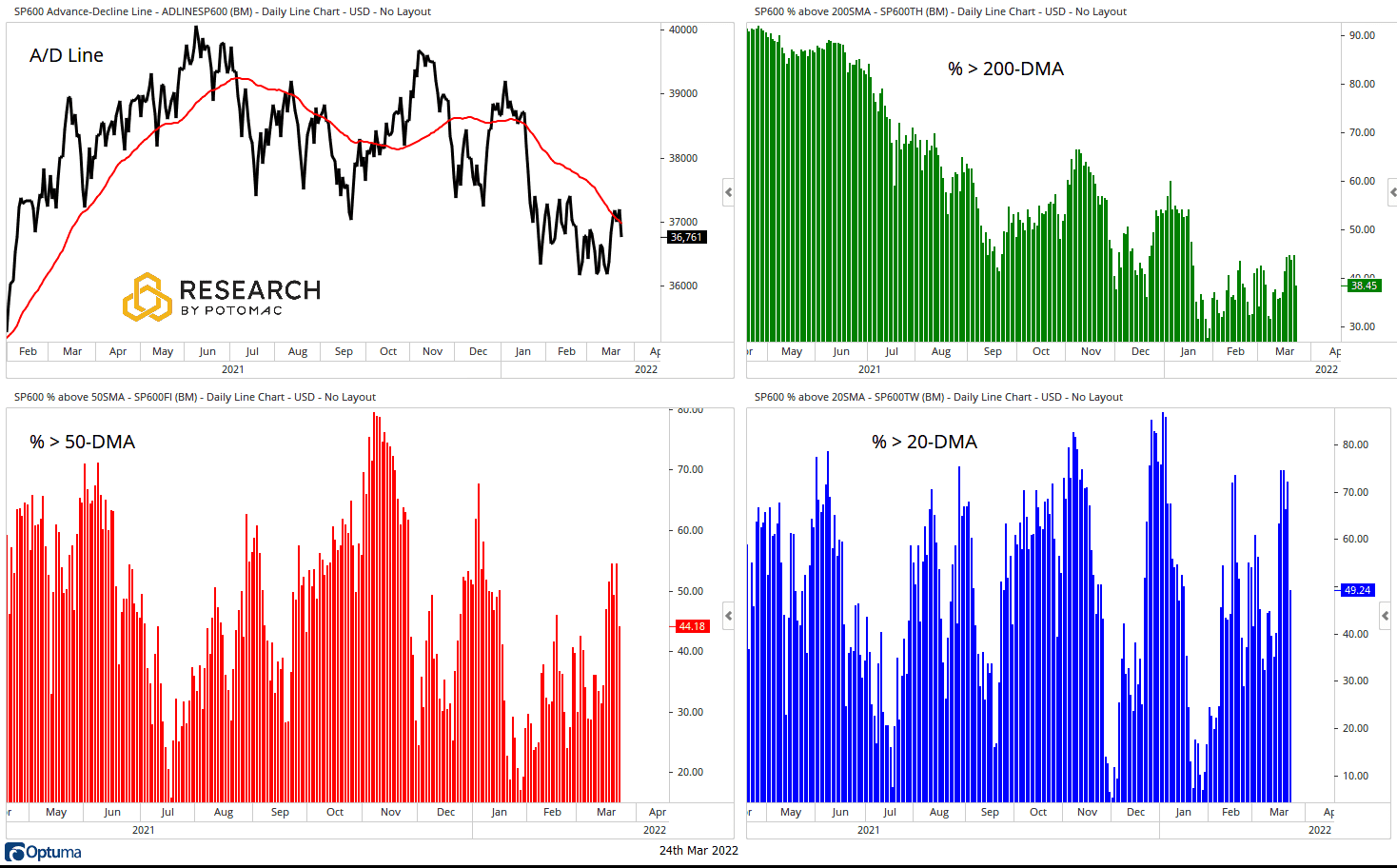
NASDAQ 100 Breadth
Breadth metrics for the NASDAQ 100 improved over the past week.
- Advance/Decline Line: Rallies back to the declining 50-day moving average.
- Percent Above Their 200-Day Moving Average: 36% from 27% last week.
- Percent Above Their 50-Day Moving Average: 47% from 30% last week.
- Percent Above Their 20-Day Moving Average: 77% from 62% last week.
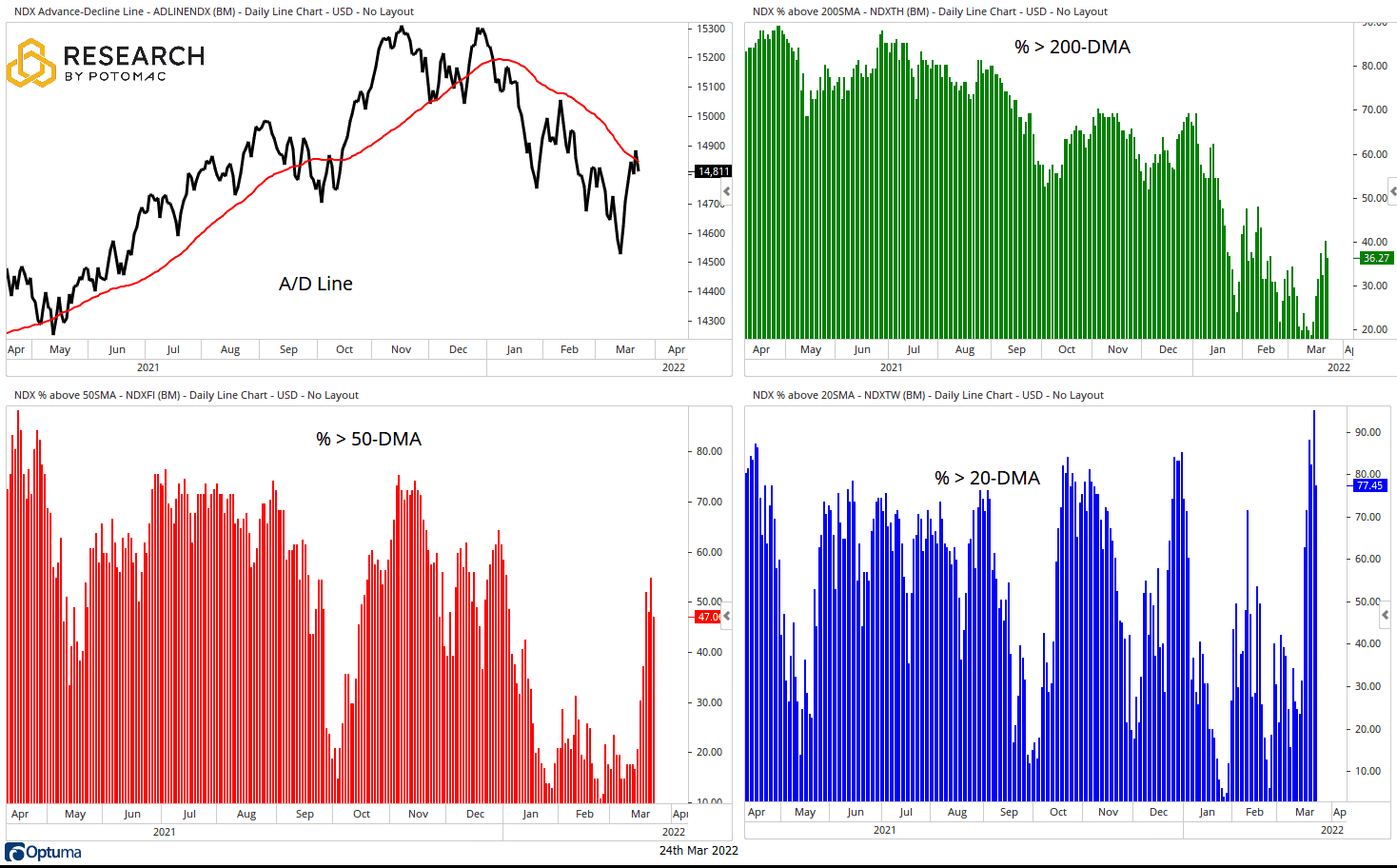
Take-Aways:
Disclosure: This information is prepared for general information only and should not be considered as individual investment advice nor as a solicitation to buy or offer to sell any securities. This material does not constitute any representation as to the suitability or appropriateness of any investment advisory program or security. Please visit our FULL DISCLOSURE page.
